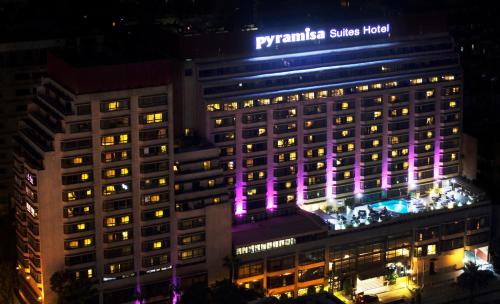Hotel and Resort Real Estate Investment Trusts (REITs) provide investors with a unique gateway into the travel and hospitality industry. These REITs own income-generating hospitality assets, ranging from budget accommodations to luxury resorts, allowing shareholders to benefit from real estate appreciation and operational revenue without having to manage hotels directly.
Within the hospitality REIT space, two major segments stand out: luxury and midscale. Each operates under distinct economic conditions, caters to different consumer demographics, and offers varying levels of risk and return. For investors—particularly those in Arab markets where tourism is integral to economic diversification—understanding how these two categories function is essential to building a robust investment strategy.
This article explores the structure, performance, and outlook of luxury and midscale hotel REITs, offering insight into how these segments respond to shifting market forces.
Understanding the Segments

Luxury hotel REITs typically focus on premium properties that offer exceptional amenities, high-end finishes, and personalized services. These hotels are usually positioned in iconic urban centers, high-traffic tourist destinations, or secluded resort areas, and target affluent travelers who prioritize quality and exclusivity.
On the other hand, midscale hotel REITs own properties that are more functional than indulgent. These establishments provide clean, reliable, and affordable lodging for families, business travelers, and budget-conscious tourists. While they may not offer opulent facilities, they emphasize efficiency and consistency.
Luxury brands such as The Ritz-Carlton, St. Regis, and Waldorf Astoria dominate the high-end market. They are often associated with international chains and emphasize brand prestige, uniqueness, and exclusivity. In contrast, midscale brands like Hampton by Hilton, Holiday Inn Express, and Ibis cater to a broad market segment that values convenience, affordability, and predictability over luxury.
Business Models and Operational Structures
Unlike most REITs that lease their properties to tenants, hotel REITs typically participate in the operational management of their assets. This can involve entering into management contracts with hotel operators or maintaining ownership while franchising the hotel under a well-known brand. Luxury and midscale segments differ in how these models are executed.
Luxury hotel REITs rely on high average daily rates (ADR) and offer a wide array of services, including fine dining, spas, concierge assistance, and event spaces. Their value proposition hinges on delivering a premium experience, which in turn justifies higher room rates. These properties also depend heavily on international tourism, business conferences, and high-net-worth individuals who can afford the price tag.
In contrast, midscale hotel REITs operate under a leaner model. They prioritize high occupancy rates over ADR and often limit ancillary services to control operational costs. Many rely on automated systems for check-in, housekeeping, and reservations, enabling them to achieve operational efficiency. This model allows for scalability and stability, particularly during times of economic volatility.
Economic Sensitivity and Performance Trends
Luxury hotel REITs are highly cyclical and respond quickly to changes in economic conditions. When markets are booming, and consumer confidence is high, luxury travel flourishes. Occupancy rates soar, room prices climb, and overall revenue strengthens. However, during downturns—such as recessions, pandemics, or geopolitical crises—this segment suffers severe setbacks. Discretionary travel is among the first expenses individuals and corporations cut, resulting in sharp revenue declines and underutilized capacity.
Midscale hotel REITs, though not immune to economic fluctuations, tend to be more resilient. Their customer base includes a larger share of essential travelers, domestic tourists, and price-sensitive consumers who continue to travel for work, healthcare, or personal reasons even during economic slowdowns. These REITs often maintain relatively stable occupancy rates and avoid the dramatic highs and lows associated with the luxury segment.
The COVID-19 pandemic illustrated this contrast starkly. Luxury hotel REITs saw significant revenue declines due to border closures, travel restrictions, and event cancellations. Midscale hotels, however, adapted more quickly—some were used as quarantine facilities or for essential workers, enabling them to recover revenue more rapidly.
Regional Trends in Arab Markets
In the Arab world, particularly in Gulf countries, tourism is a cornerstone of economic diversification plans. Governments have invested heavily in hospitality infrastructure, aiming to position cities like Dubai, Riyadh, and Doha as global luxury destinations. The result has been a surge in five-star hotel development backed by both sovereign funds and international investors.
In Saudi Arabia, projects like NEOM, the Red Sea Project, and Diriyah Gate are designed to attract high-end tourists. These developments offer opportunities for luxury hotel REITs to expand into unique, government-supported environments that promise long-term appreciation.
Yet, midscale hospitality is also on the rise. Domestic travel is increasing in countries like Egypt, Jordan, and Saudi Arabia, supported by road networks, pilgrimage activity, and the growing middle class. Cities like Makkah and Madinah welcome millions of visitors annually who often prefer affordable, practical accommodations. Midscale REITs can tap into this consistent demand, offering returns that are less volatile and more predictable.
This bifurcation in the market creates a strategic choice for investors: pursue luxury properties with potentially high, though inconsistent, returns or target midscale assets that yield steady income over time.
Capital Expenditures and Asset Maintenance
The cost of owning and operating luxury hotel properties is significantly higher than that of midscale properties. Luxury hotels must maintain premium interiors, cutting-edge amenities, and high service standards, all of which require ongoing investment. Renovations are frequent, and the cost per key (room) is considerably elevated. Additionally, staffing costs are higher due to the need for specialized personnel and lower staff-to-guest ratios.
In contrast, midscale hotels operate with standardized designs and minimal frills. Their operating models focus on functionality and cost-efficiency. With lower overhead and streamlined staffing, they present a more stable cost structure. Renovations are less frequent and less expensive, and properties can often be rolled out or refurbished in a fraction of the time and budget of luxury assets.
For REITs, this difference in capital expenditure can have long-term implications. Luxury REITs may experience significant cash flow fluctuations due to renovation cycles, while midscale REITs enjoy more predictable financial performance and fewer disruptions from major upgrades.
Investor Considerations
When evaluating hotel REITs, investors must assess their personal risk tolerance and investment objectives. Luxury hotel REITs offer strong growth potential during favorable economic conditions. Their properties often appreciate faster, benefit from premium branding, and can deliver high returns when travel demand peaks. However, they are also susceptible to prolonged downturns, volatile cash flows, and steep operating costs.
Midscale hotel REITs appeal to more conservative investors. Their returns may be lower in booming markets, but their downside risk is limited. The consistency of their customer base—bolstered by business travel, domestic tourism, and essential lodging—makes them suitable for income-focused portfolios.
Diversification within a hotel REIT portfolio is also possible. Some REITs blend both luxury and midscale assets to balance growth and stability. Others focus exclusively on one segment to target a specific investor niche.
Examples and Market Leadership
In global markets, companies like Host Hotels & Resorts exemplify the luxury-focused REIT model. With a portfolio of high-end properties affiliated with Ritz-Carlton, JW Marriott, and W Hotels, Host targets international business and leisure travelers. Its earnings, however, show higher volatility linked to the broader economic climate.
By contrast, Apple Hospitality REIT represents a midscale model, managing hundreds of properties across the United States under brands like Hilton Garden Inn and Courtyard. Its focus on limited-service hotels and operational efficiency allows it to maintain steady dividend payouts and conservative growth.
In the Middle East and North Africa (MENA) region, hospitality REITs are still emerging, but government-backed entities and private developers are taking the lead. Emirates REIT, for example, includes hospitality assets in its broader real estate portfolio, while newer REITs in Saudi Arabia are beginning to explore hospitality investments as the Kingdom pushes toward Vision 2030.
Outlook and Strategic Implications
The future of hotel REITs depends on a mix of global travel patterns, economic trends, and technological shifts. For luxury REITs, the growth of experiential travel, business conferences, and high-end leisure tourism presents promising opportunities. As wealth increases in regions like the Gulf, the demand for exclusive, luxurious stays is expected to grow.
Meanwhile, midscale REITs are set to benefit from increasing domestic mobility, population growth, and changing travel behaviors. Post-pandemic, travelers are prioritizing affordability and convenience—trends that align with midscale offerings. Additionally, the use of technology and automation in midscale hotels enhances their profitability and reduces staffing challenges.
Arab countries stand to gain from both segments. As cities invest in world-class events, resorts, and entertainment venues, luxury hospitality will flourish. Simultaneously, the rise in intra-regional travel, religious tourism, and infrastructure development supports a robust future for midscale REITs.
Conclusion
Hotel and resort REITs offer compelling opportunities, but the choice between luxury and midscale segments requires careful consideration. Luxury hotels can deliver exceptional returns during prosperous times but involve higher risk and greater capital requirements. Midscale hotels provide more stable, predictable income and are typically less affected by economic downturns.
For investors in Arab countries, the timing is particularly favorable. With national strategies focused on tourism development, both luxury and midscale hotel REITs can play a role in portfolio growth. By understanding the nuances of each segment—target audience, operating model, market sensitivity, and capital needs—investors can align their choices with broader economic trends and personal investment goals.
Ultimately, a diversified approach that includes exposure to both luxury and midscale hotel assets may offer the best of both worlds: growth potential during upcycles and income stability during downturns.










